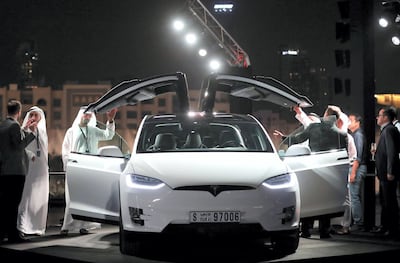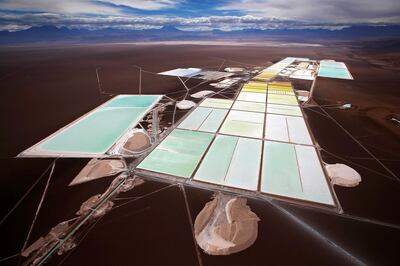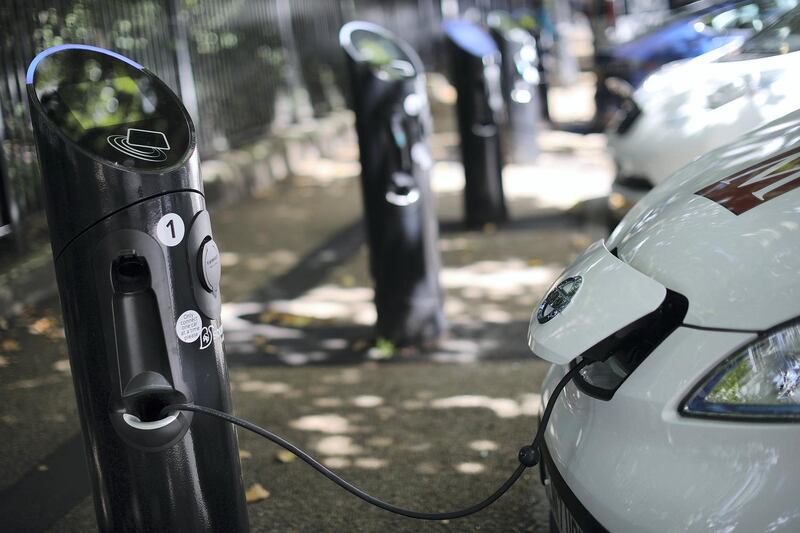The adoption of the internal combustion engine, a revolutionary invention that took the power of the steam locomotive and made it more compact and convenient, saw horse-drawn carriages moved from the streets to the history books within 15 years. Enormous fortunes were made, everyday life was transformed and cityscapes were reimagined.
Now, almost a century on from the first Model T rolling off Henry Ford’s innovative assembly line, the race is on to find an alternative power source to combat the global emissions crisis – the unforeseen legacy of the internal combustion engine and a testament to the ubiquitousness of the technology.
The world has changed dramatically over the last hundred years and will continue to do so.
In 1913, the world's population was around 1.8 billion. Today it stands at 7.6 billion. By 2050, it is expected to surpass 9 billion and the International Energy Agency has estimated the number of cars will double from the current figure of one billion. The UN expects the global population to exceed 11 billion by the end of the century.
Rising numbers of people mean rising demands for energy, which, unless something dramatically changes, will ensure the world misses its target to limit the global temperature rise to two degrees celsius.
With the transport sector accounting for more than a quarter of total world energy use, many governments are turning their attention to mitigating vehicle emissions. The European Union has set a 2050 target of reducing emissions from the transport sector by 95 per cent. A number of countries, including Britain, China and France, have announced plans to phase out the sale of petrol and diesel engines within the next few decades. India wants all its vehicles to be electric by 2030.
Paul Ekins, professor of resources and environment policy at UCL and co-director of the UK Energy Research Centre, told The National that unlike other carbon-heavy industries, such as the building sector, the hyper-competitive automobile industry has willingly committed in recent years to finding an alternative, low-carbon model.
“The mood music was changing and they couldn’t afford to allow things to happen without them. They would rather be inside the tent influencing the direction than outside the tent and trying to knock it down,” said Prof Ekins.
He is convinced this move away from the internal combustion engine has been driven largely by climate change, followed by more awareness of local air pollution issues and the Volkswagen emissions scandal.

He said: “I think the thing that has changed above all is that the narrative around low carbon technology has changed. If you go back to the Copenhagen conference in 2009, all the talk was about burdens and cost sharing and who was going to do it… Well, politics doesn’t deal well with that kind of narrative. In Paris [in 2016], all the talk was about opportunity: ‘we have new technologies’, ‘we have innovation’, ‘this is going to be one of the defining areas of competitive advantage in the future’.
“This is something that was started by climate change more than anything else and I think that it was pushed by the perception of technological opportunity and it’s now effectively unstoppable.”
The challenge of finding low or zero emissions energy for vehicles that can still deliver speed, distance, comfort and status is a tall order, but is something the industry has realised it must do to futureproof themselves if they want to maintain market share.
In the late 1800s and early 1900s, electric vehicles powered by batteries almost became the dominant technology, but fell out of favour because of the impracticality of how often they needed to be recharged. Research into batteries never stopped, but only in recent years has the technology seemed viable for automobiles.
This comes at a time when the general appeal of an electric vehicle has increased, Dr Anna Bonne, the transport lead at the UK’s Institution of Engineering and Technology, explained.
“The image of the EV (electric vehicle) has changed from the tiny short-range commuter car to a luxury vehicle. Tesla has made the electric vehicle market sexier by designing one you would actually like to drive. Audi, Porsche, JLR and Aston Martin have all announced that they will be producing electric vehicles soon,” she said.
The other challenge facing the increased adoption of electric vehicles is where the energy powering the batteries will come from.
In the UK alone, with a population of 65.6 million, it is predicted that demand will grow from the current 336 terawatt hours a year by about 20 per cent over the next 20 years. In 2050, demand is on course to rise to 520 TWh/year.
“The main challenge from the climate change point of view is to get low carbon electricity because at the moment electric cars emit just as much carbon as ICEs (internal combustion engines), it’s just emitted at the power station and not from the car,” said Prof Ekins.
Speaking at last year’s Future of Energy Summit, Spencer Dale, the BP group’s chief economist, and Thomas D Smith, BP’s global oil market economist, explained: “The precise reduction in CO2 emissions associated with the growth of EVs depends, of course, on the fuels used to produce the electricity that powers them.

“Despite what my children seem to think – and, indeed, what some “zero emission” EV regulation seems to imply – electricity doesn’t grow in walls.
“And in countries or regions in which the power sector is heavily reliant on coal, the reductions in carbon emissions associated with switching to an EV may be minimal or even worse: it is tantamount to switching from an oil-fuelled car to a coal-powered one.”
There are a number of solutions to this problem, such as biofuels and one leading contender is nuclear energy.
Speaking at a recent event, Harry Holt, president of Rolls-Royce Nuclear, said that to keep up with demand, low-carbon power generation will need to increase threefold. Last year, his company produced 150 TWh of low carbon energy. By 2030, they are aiming to produce 350 TWh and by 2040 that will rise to 425 TWh.
“What that means as a challenge to the industry is we’re going to need to install about 95, just short of 100, gigawatts of electricity generating capacity by 2035, which is effectively replacing the entirety of what we’ve got and a little bit more on top of that”.
He believes that nuclear will need to provide around 28 per cent of the installed energy capacity in 2050. To do this, Rolls-Royce Nuclear are investing in small-scale nuclear reactors.
“We believe that these small modular reactors are going to have a very high load factor, a very high rate of utilisation. We believe they are quicker and easier to build and they therefore significantly reduce the financing burden and ultimately provide competitive electricity into the market,” said Mr Holt.
The other environmental factor to be considered with widespread battery adoption is a social-environment issue. The resources used in batteries are incredibly valuable.
Tesla plans to sell 500,000 electric cars a year. Using current technology, the company would need roughly two-thirds of the world’s annual lithium production for their batteries. Supplies of other minerals like cobalt could also come under pressure.
_______________
Read more:
[ End of the internal combustion engine, part 1: how cars came to the UAE ]
[ End of the internal combustion engine, part 3: the age of the electric vehicle begins ]
[ End of the internal combustion engine, part 4: an affection for classic cars lives on ]
_______________
Although this means they are unlikely to be thrown away and therefore the risk of them ending up in rivers or landfills is low, it does mean the areas of the world where lithium is mined will be under pressure. Areas such as Bolivia, who do not have a good labour history and have had issues with child labour. These minerals will need to be mined in a socially and morally acceptable way.
Despite the number of challenges, as there was with the development of the internal combustion engine, large sums of money are there to be made.
As highlighted in the UK’s Clean Growth Strategy, analysis for the UK Committee on Climate Change estimated that the low carbon economy has the potential to grow 11 per cent per year between 2015 and 2030 – four times faster than the rest of the economy. Over £2.5 billion will be invested by the UK government between 2015 to 2021. This forms part of the largest increase in public spending on UK science, research and innovation in almost 40 years.
History of the internal combustion engine

_______________
Read more:
[ EV does it: how the Renault Zoe is now a genuine electric-car contender ]
[ The future of driving? Living with two electric cars in the UAE for a week ]






